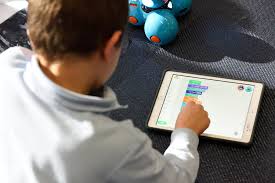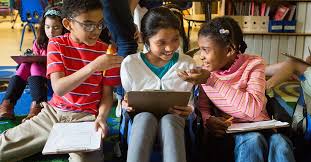What are good apps for children with autism?
6 Best Autism Apps For Skill Development and Confidence in 2021
- Proloquo2Go. Apple only.
- Language Therapy for Kids – MITA. Apple + Android.
- Otsimo. Apple + Android.
- ABC Autismo. Android only.
What activities are good for Aspergers? Many children with Asperger’s develop strong interests and talents in areas such as art, music, or photography. Some have a very good report with animals, so something such as horseback riding lessons might be beneficial.
What games are good for autistic child?
Ten Toys and Games for Autistic Toddlers and Children
- Sign up for AmazonSmile and designate Autism Speaks as your charity of choice.
- Simple First Words: Let’s Talk.
- 2-in-1 Snug ‘n Secure Swing.
- Smart Tablet.
- Sound Puzzles.
- Jumpsmart Electronic Trampoline.
- Calico Critters Family Camper and Cherry Cruiser.
- Hungry Hungry Hippos.
How does iPad help autism? The use of iPads to improve the ability of autistic children to take turns in games was examined. It was found that iPads improve playing skills and decrease the number of problematic behaviors. The researchers suggest using iPads as an effective tool for socialization and, especially, taking turns.
What are good apps for children with autism? – Additional Questions
Does screen time make autism worse?
Some studies suggest that increased screen time in young children is associated to negative health outcomes such as decreased cognitive ability, impaired language development, mood, and autistic-like behavior including hyperactivity, short attention span, and irritability (1,2).
How much screen time should a child with autism have?
The Benefits of Visual Supports for Autism
| Age(years) |
Recommended Screen Time(hours/day) |
| 3-5 |
0.5-1 |
| 5-7 |
1-1.5 |
| 7-12 |
1-1.5 |
| 12-15 |
1.5-2 |
1 more row
How does technology help autism?
Research indicates that the use of technology helps children identified as existing on the autism spectrum to improve literacy, social-communicative skills, adaptive skills, and to accurately detect the emotions of others.
Do tablets help kids with autism?
A tablet may be a great option for a child who learns well from computer-based educational games, needs a portable device, or cannot use a mouse. Applications (or “apps”) that target specific skills and provide reinforcement for success are best for children on the autism spectrum.
Can my autistic child get a free iPad?
If your child is diagnosed with autism, you may want to look into these grants: Autism Care & Treatment: ACT awards quarterly grants between $100 and $5,000 to families with children with autism. Danny’s Wish Foundation: Danny’s Wish grants iPads to kids with autism once a year.
How are iPads used as assistive technology?
iPad Accessibility Features
VoiceOver, an advanced screen reader. Siri and Dictation help you type, launch apps, and read your calendar. Speak Selection can read your email, iMessages, web pages, and books to you. Highlight text in any application, tap Speak, and Speak Selection reads the selected text aloud.
Why are iPads good for students with disabilities?
With touch screens instead of pen and paper or a point-and-click mouse, tablets can be much easier to use by students with fine motor difficulties. They also help disorganized students by consolidating calendars, memos and notes all in one device.
Is an iPad a speech generating device?
Speech Output
The iPad, iPhone and iTouch may not be sufficiently loud to use as a speech generating device. With an external speaker the voice output is louder. External speakers may be required to create speech output that is loud enough when using the iPad as a speech generating device.
What is an example of assistive technology?
Some examples of assistive technologies are: Mobility aids, such as wheelchairs, scooters, walkers, canes, crutches1, prosthetic devices, and orthotic devices. Hearing aids to help people hear or hear more clearly.
What are the 3 types of assistive technology?
Assistive technology can range from no and low tech solutions to high tech solutions.
Vision
- magnifiers,
- talking devices such as a talking thermostat,
- Braille displays,
- screen reading software,
- text-to-speech systems using Optical Character Recognition (OCR),
- large print materials, and.
- phones with large tactile buttons.
What are 3 types of assistive tech that could help students with low incidence disabilities?
8 examples of assistive technology and adaptive tools
- Audio players and recorders. It may help your child to be able to listen to the words while reading them on the page.
- Timers.
- Reading guides.
- Seat cushions.
- FM listening systems.
- Calculators.
- Writing supports.
- Graphic organizers.
What is the difference between assistive and adaptive technology?
In other words, “assistive technology is any object or system that increases or maintains the capabilities of people with disabilities,” while adaptive technology is “any object or system that is specifically designed for the purpose of increasing or maintaining the capabilities of people with disabilities.”
Which is an example type of adaptive devices?
Examples of adaptive devices include equipment to help with dressing, bathing, grooming, eating, and toileting.
What are supportive devices?
Supportive devices – adaptive equipment used to provide support to the person. due to therapy needs, the person is non-ambulatory, or uses orthotics or braces. in some manner. If determined by the therapist, the device may be altered to. meet the needs of the individual.
What is adaptive technology list several examples?
Assistive technology devices may include things like hearing aids; screen magnifiers; large-key keyboards; alternative input devices, such as touchscreen displays; oversize trackballs on computer mice; speech recognition; and text readers.
What are examples of assistive technology for autism?
Examples include battery-operated sensory toys, visual timers, and social skills videos. High-tech AT is digital technology and can include anything from augmentative communication technology for non-verbal people to robots built to increase social skills in children on the spectrum.
What are the 10 major assistive technology categories?
Assistive technologies include, but are not limited to, the following:
- Text to Speech.
- Reading Pens.
- Voice Recognition.
- Digital Recorders.
- iPads and Tablets.
- Electronic Spell Checkers.
- Word Prediction Software.
- Visual Search Engines.




